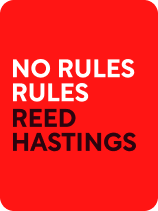

This article is an excerpt from the Shortform book guide to "No Rules Rules" by Reed Hastings. Shortform has the world's best summaries and analyses of books you should be reading.
Like this article? Sign up for a free trial here .
What is the culture map and how does Netflix use it? How can it help you better understand the different cultures of people you work with?
A culture map is a tool that maps out key characteristics of a given culture. Understanding points of overlap and deviation help you communicate better across cultures.
Read more about the culture map as a tool and how Netflix was able to use it successfully.
Use the Culture Map Tool
While Netflix’s international employees generally adjusted well to the company’s culture, some aspects were more difficult than others. For example, the generous severance packages that the company gave employees who failed the Keeper Test were considered paltry in some other countries. To resolve this, Hastings had to make severances larger in those countries.
Hastings wanted to remain vigilant about finding the areas in which Netflix’s corporate culture clashed or aligned with local cultures, so that he could lead his American and foreign employees in being as effective as possible. Hastings found a tool for this task when he read The Culture Map by Erin Meyer, who co-authored this book. Meyer had created culture charts that used scales to measure norms for various behaviors, such as communication and decision-making. For example, on a scale from “confrontational” to “avoids confrontation,” Japan ranks as highly conflict-avoidant in the “Disagreeing” category. By comparing the charts of different cultures, Hastings could quickly and easily see the ways in which two cultures were similar as well as different, and that insight could help him develop ways to bridge those differences.
Hastings shared the culture maps with his senior vice presidents, and then he asked them to work in small groups to map Netflix’s culture within the same dimensions. Each group’s map differed slightly, but they all showed the same general trends. Hastings aggregated the charts to create one Netflix culture map, and he compared this with the charts for each of the cultures where the company had regional offices (Amsterdam, São Paulo, Singapore, and Tokyo). When Hastings saw the categories in which the culture maps diverged, he recognized that they reflected actual issues and misunderstandings that had arisen. For example, the Netherlands’ culture map ranked the culture’s decision-making closer to the “consensual” side of the scale than the “top-down” side, which explained why Netflix’s Dutch employees struggled to adopt the informed captain model.
Exercise: Have You Had Cross-Cultural Confusion?
Reflect on an occasion when you experienced cultural differences.
- Describe the last time you dealt with some confusion or misunderstanding when communicating with someone from another country.
- What was the cultural difference that caused the confusion?
- How did you find common ground?
- How can you use this experience to inform your future interactions with people from that country or other countries?

———End of Preview———
Like what you just read? Read the rest of the world's best book summary and analysis of Reed Hastings's "No Rules Rules" at Shortform .
Here's what you'll find in our full No Rules Rules summary :
- How Netflix achieved massive success in a short period of time
- The unusual business practices that have helped Netflix sustain its success
- Why Netflix fires adequate employees






